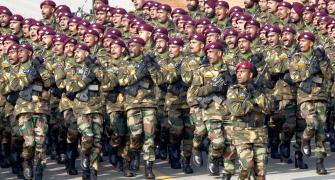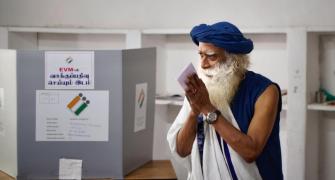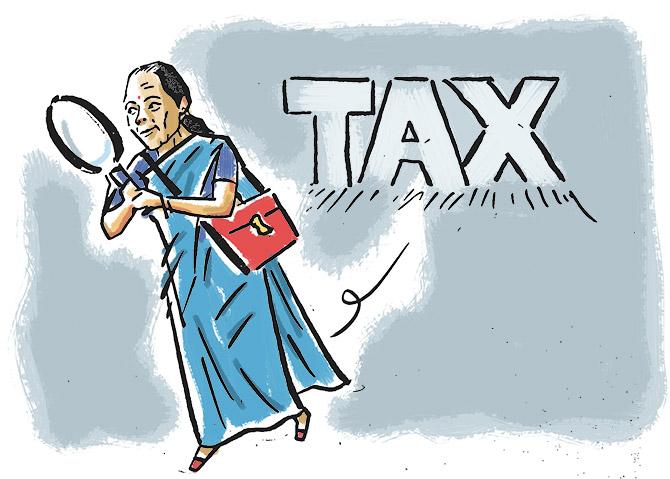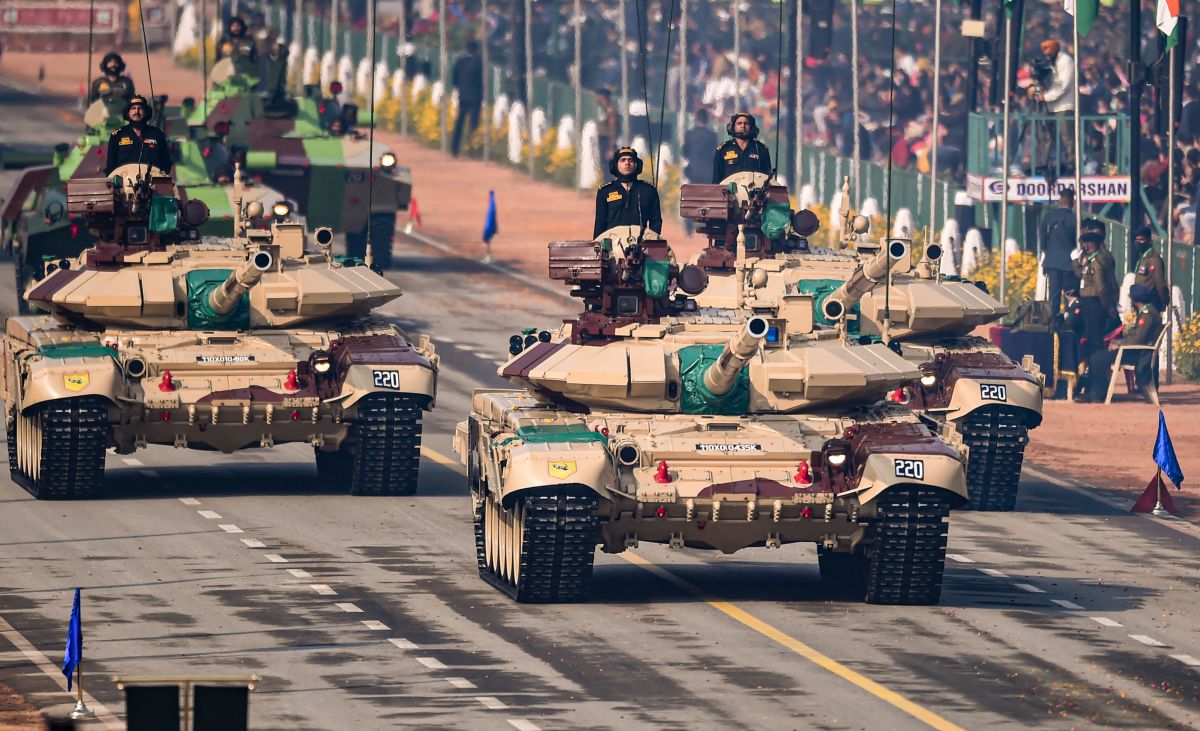Has the army confronted China with emergency purchases that have been largely paid for by pensioners, asks Ajai Shukla.

Given the double challenge posed by the COVID-19 related economic crunch and the Chinese troop intrusions into Ladakh, the government's management of the defence budget over the current financial year seems praiseworthy.
On the one hand, the military has deployed around 40,000 soldiers on the remotest of picquets along the Line of Actual Control with China without greatly overshooting the revenue budget -- from which activities such as troop movement, training and the construction of accommodation are funded.
Second, the three services have managed the crisis with China without busting the capital budget. Together, the army, navy and air force have overspent the capital budget by a mere Rs 20,776 crore (Rs 207.76 billion).
Third, and most intriguingly, the three services have created resources by reducing the pension payout from the budgeted Rs 133,825 crore (Rs 1.33 trillion) to just Rs 125,000 crore (Rs 1.25 trillion) -- a saving of Rs 8,825 crore (Rs 88.25 billion).
In what would be a repeat of this miracle, the pension allocation for 2021-2022 is just Rs 115,850 crore, down by another Rs 9,150 crore (Rs 91.50 bilion).
This appears to suggest that the army has confronted and blocked the world's second-largest military power, in remote and hostile terrain, equipping itself with emergency purchases that have been largely paid for by pensioners.
Since such an outcome is hardly possible, let us look deeper at the assumptions on which it is based.
First, since the pension budget is forecast on carefully tabulated numbers, how could the government have saved Rs 8,825 crore?
Discounting the possibility that COVID-19 claimed the lives of tens of thousands of pensioners, there are only two ways this could have been engineered.
First, one or two increments of dearness allowance that were budgeted for in February 2020 were simply not paid to the pensioners, thus reducing the payout.
The second possibility is that the government's blockage on voluntary retirement of soldiers -- a standard reflex in times of tension -- reduced the number of retirees who would have become eligible for pensions in normal years.
Many defence analysts, including your columnist, have argued for the pressing need to reduce the pension budget, in order to make greater resources available for expenditures such as equipment modernisation.
However, that has to be an organic process of reducing service tenures to ensure that fewer retirees are eligible for a pension.
In contrast, measures such as holding back DA instalments or blocking voluntary retirement are mere temporary fixes that amount to kicking the can down the road.
In all probability, financial year 2021-2022 will see DA increases that will require the pension allocations to be increased at the revised estimates stage.
Coming to the question of how such a significant troop deployment could take place without overshooting the revenue budget, the answer is simply that if a deployment is carried out with the existing resources -- such as a reserve formation being deployed to the front -- the expenditure is not much more than what would be incurred by the same formation sitting in peace locations and utilising its fuel budget in training exercises.
Furthermore, while the airlift of an infantry battalion or a squadron of tanks would incur sizeable costs, the payment is made by the army to the air force, keeping it all within the family.
Third, in the realm of capital expenditure, the defence minister has made much of an '18.75 per cent increase' in capital allocations that is 'the highest increase in 15 years', but the fact is that this Rs 20,777 crore increase was not budgeted.
It took place in the months after the Chinese intrusions were discovered and consisted mainly of emergency purchases of extreme cold weather clothing, ammunition and other warfighting equipment.
In fact, if one were to compare the year-on-year change in the capital budget, the revised estimates of the preceding year is to be compared with the budget allocation of the year that follows.
Going by that, the capital allocations have decreased by Rs 2,700 crore (Rs 27 billion).
Even so, there is the possibility that the situation on the LAC cools by spring and the three services do not have to carry out emergency procurement worth another Rs 20,000 crore (rs 200 billion) from the capital budget next year.
That would allow the three services to initiate capital purchases worth some Rs 2 trillion, since just 10 per cent of the contracted amount is required to be paid at the time of signature.
Assuming that the government sustains the same capex level in the years to come, this could trigger a game-changing moment in India's equipment modernisation programme.
This could be even more revolutionary if the government’s proposal for land monetisation includes land that is owned by the military and by defence public sector undertakings, such as Hindustan Aeronautics Ltd. Such a step could create the resources for a root-and-branch modernisation of the military's outdated arsenal.
The three services are already counting their chickens.
The average capital budget allocation over the preceding eight years -- albeit with significant fluctuations -- has been about 29 per cent to the army, 29 per cent to the navy and 42 per cent to the air force.
The navy is the service with the most acquisition projects at the point of conclusion.
Given the government's Atmanirbhar (self-reliant) objectives, there have been very few foreign contracts concluded over the past two years.
Naval planners believe that creates propitious conditions for concluding a Rs 13,000 crore (Rs 130 billion) purchase of 'next generation missile vessels', which will be competitively tendered; a contract to build two 'cadet training ships'; another for 'fast attack craft' and a Rs 9,000 crore (rs 90 billion) tender for building 11 naval offshore patrol vessels. All these contracts could be game-changers that bring companies such as Larsen & Toubro into the fray.
Similarly, the air force, which has the lion's share of the capex budget, is anticipating the signature of the Rs 45,000 crore (Rs 450 billion) contract with HAL to build 83 Tejas Mark 1A fighters as well as a smaller number of Sukhoi-30MKIs that will be built in Nashik.
The army, short of firepower, but with Rs 3,200 crore (Rs 32 billion) more in its capex budget, is likely to focus its procurement efforts on artillery -- including a repeat order for Pinaka rocket launchers and the K-9 Vajra self-propelled guns that are being built by Larsen & Toubro in India with South Korean technology.
However, the defence ministry needs to redefine the drawing up of its procurement priorities.
'Show me the distribution of your defence budget and I will tell you your operational priorities', goes the old military adage.
This does not apply to India, however, where procurement has little to do with operational necessity, but rather on what is emerging from its long stay in a years-long procurement pipeline.











